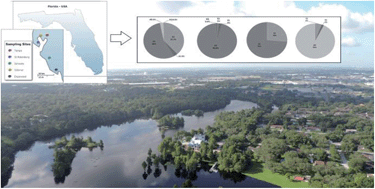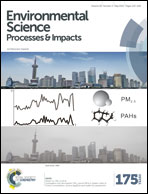Evaluation of analytical methodology for the detection of hormones and their attenuation during aquifer recharge and recovery cycles
Abstract
The hormones listed in the screening survey list 2 of the Unregulated Contaminant Monitoring Rule 3 (estrone, 17-β-estradiol, 17-α-ethynylestradiol, 16-α-hydroxyestradiol (estriol), equilin, testosterone and 4-androstene-3,17-dione) were analyzed by liquid chromatography electrospray ionization tandem mass spectrometry (LC-ESI-MS/MS). Two analytical methods were compared: EPA method 539 and the isotope dilution method. EPA method 539 was successfully utilized in river and drinking water matrices with fortified recoveries of 98.9 to 108.5%. Samples from the Hillsborough River reflected levels below the method detection limit (MDL) for the majority of the analytes, except estrone (E1), which was detected at very low concentrations (<0.5 to 1 ng L−1) in the majority of samples. No hormones were detected in drinking water samples. The isotope dilution method was used to analyze reclaimed and aquifer storage and recovery (ASR) water samples as a result of strong matrix/solid phase extraction (SPE) losses observed in these more complex matrices. Most of the compounds were not detected or found at relatively low concentrations in the ASR samples. Attenuation of 50 to 99.1% was observed as a result of the ASR recharge/recovery cycles for most of the hormones, except for estriol (E3). Relatively stable concentrations of E3 were found, with only 10% attenuation at one of the sites and no measureable attenuation at another location. These results have substantiated that while EPA method 539 works well for most environmental samples, the isotope dilution method is more robust when dealing with complex matrices such as reclaimed and ASR samples.


 Please wait while we load your content...
Please wait while we load your content...